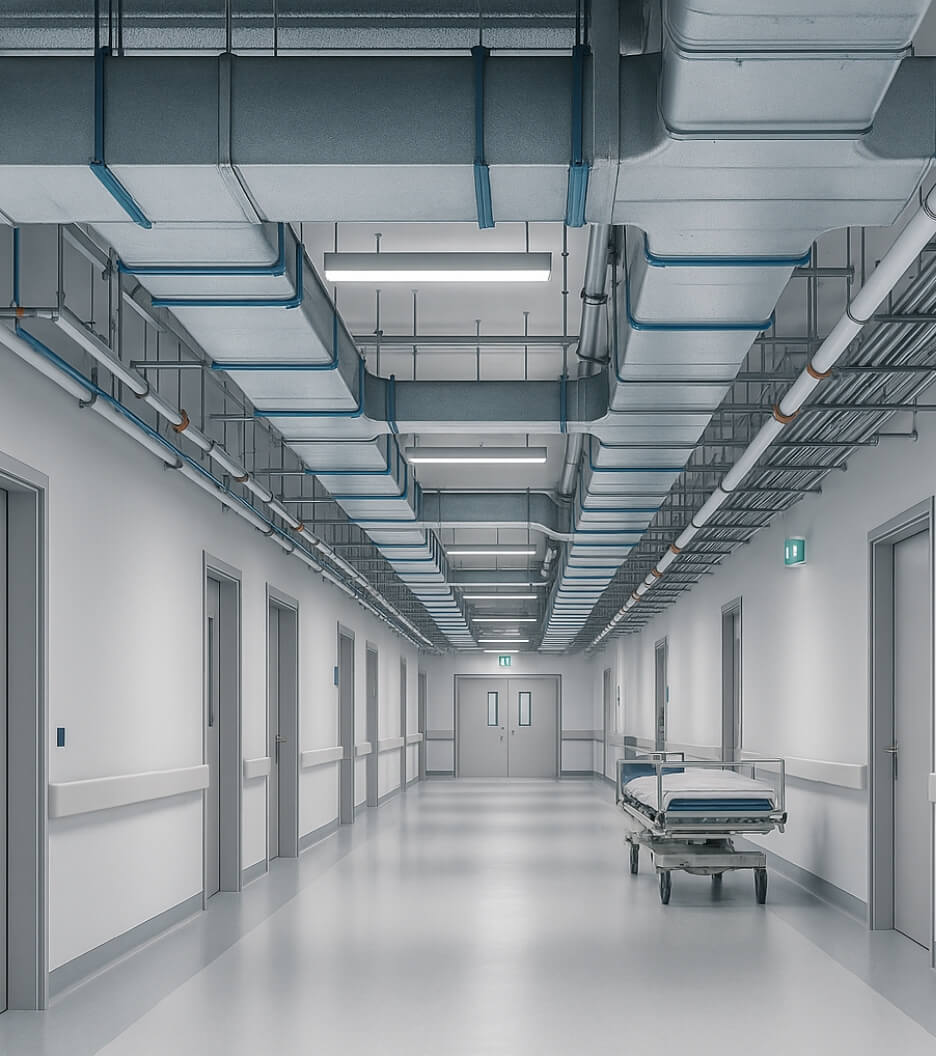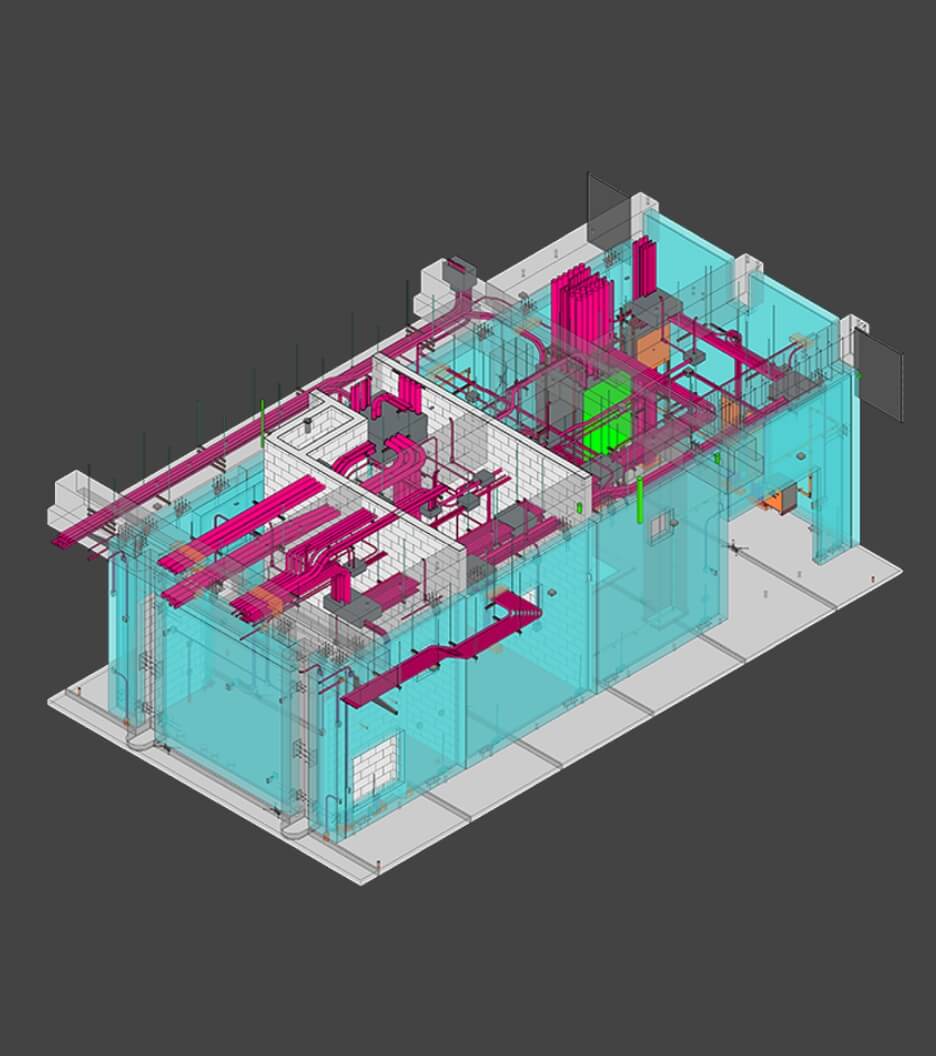 Him Darji
Him Darji
MEP Coordination for Cost Reduction in Construction Projects
 Him Darji
Him Darji

Send Us Your Requirement
“Prevention is better than cure” is one of the most famous and used quotes that depicts a deepening to prevent things before the damage. This quote also sets the tone for the AEC industry, as modern building constructions are complex and demand harmony between all the infrastructure components. Imagine a building where all the pipelines, ducts, and wires are harmonized effortlessly at the accurate location of the building. This harmony between many components ensures the building is functional, comfortable, and sustainable, keeping in mind the ongoing trend in the market.
Imagine another scenario where these wires are messed up, ducts overcross the pipes, there is less ventilation, and other components are placed haphazardly. This will result in many dysfunctional errors, costly rework, and unsafe and suffocated environments for tenants to live in. Such infrastructures are unsafe in many aspects and may require the builder to rework them. Therefore, in order to avoid such chaos and maintain harmony between multiple building components, MEP coordination plays a significant role in the construction process.
Since the power of modern technologies influences the AEC industry, the sectors continue to undergo more significant transitions that can reshape the methodology and approach. Long ago, professionals used pen and paper to draw meticulous sketches of the construction site, which consisted of some major components. Although traditional techniques and hand-drawn sketches needed more accuracy, the process was time-consuming. In today’s modern era, the AEC sectors have witnessed some groundbreaking technologies, one of which is building information modeling. With technological evolution and growth, BIM integrated with MEP coordination helps to create time-efficient and cost-effective procedures that reduce errors, rework, safety, maintaining budget lines, harmony between various components, and more.
Elevate Construction Projects with MEP BIM Coordination Services
Get a Quote
MEP is a significant component in any infrastructure and is essential to make the structure valuable, liveable, sustainable, and functional. MEP stands for mechanical, electrical, and plumbing systems responsible for curating a liveable environment for occupants to stay. As a matter of fact, these three disciplines are the backbone of construction projects, so it is important to maintain harmony between them. MEP systems need to be in sync to create challenges for MEP contractors & other professionals onboard at any construction stage that can lead to significant cost and time overruns. Therefore, the acute role of MEP coordination services comes into play. For better clarity and understanding, let’s deeply explore the importance of MEP coordination and how it can help reduce costs in construction projects.
MEP Coordination & How to Reduce Construction Cost
In an era where technology is rapidly changing the reality of AEC, BIM has become one of the go-to digital tools that has reshaped how construction projects are perceived. BIM is one of the technologies in the architecture and construction industry that brings a lot of benefits and is an easy factor for architects, designers, engineers, and contractors to work collaboratively. However, a structure is only useful if the infrastructure is functional. Building functionality means proper drainage, electrical wiring, HVAC systems, ventilation, plumbing systems, and fire safety.
All these components play a crucial role, and harmony between them is essential for a building to become functional. This is where the role of MEP services comes into play, as it helps bring these three disciplines together. Developing clash-free MEP disciplines depicts the overall project success. As an important aspect, making MEP systems aligned and synchronized is evident as each component plays a different role. Hence, MEP coordination orchestrates the harmony of construction and making sure that every component seamlessly fits together like a crafted puzzle. From planning to the final execution of the construction process, mechanical, electrical, and plumbing systems play important roles in the infrastructure’s functionality, safety, and sustainability. Moreover, MEPF BIM services oversee the complex system and MEP coordination drawings to ensure all the components seamlessly fit together, helping to achieve functional results in the construction projects.
In fact, MEP coordination leverages the power of BIM to revolutionize the way MEP systems are planned, designed, and installed. This significant process also helps identify and resolve potential clashes, risks, or errors, which helps prevent costly delays and rework in the construction. The following are some benefits that can help make the construction project more accurate.
Benefits Of MEP Coordination In AEC
Reduced Conflicts, Clashes, And Rework
Improved Safety For Onsite Workers
Preventing Cost Overruns
Energy Efficint Infrastructure
Improved Facility Management
These are some of the benefits that impact the overall performance of the construction project. Although one of the most prominent aspects of any project is the budget, it plays a pivotal role. Strictly adhering to project requirements within the budget constraints becomes a challenge for AEC professionals. Achieving a high-quality MEP system under the budget can be catered to with MEP coordination services. However, maintaining the high quality and budget constraints for any construction project can be achieved with the following strategies to reduce costs.
- Early Collaboration and Design: MEP engineers can collaborate at an early stage in the design process and other aspects of the project. This eases the complex process while bringing efficient results. MEP system layout without any clashes and involves tailored project requirements.
- Energy efficiency: This is one of the prominent solutions which has become widely popular in the AEC industry. Energy-efficient solutions can significantly decrease project costs while enhancing the building’s lifespan. It also makes it easier for facility managers to accommodate the project.
- Optimized System Sizing and Selection:Managing the size of MEP systems can help reduce the unnecessary cost of equipment, material, and installation.
Since MEP systems are the backbone of modern architecture, they work within budget constraints and ensure the highest level of safety. With MEP BIM services, professionals can easily install the components, ensuring the utmost safety and accurate facility management. However, having an in-house team of experts can be an added expenditure for AEC firms to cater to other crucial activities.
How UniquesCADD Can Be Helpful
Since AEC firms are generally occupied with various tasks, having an in-house team of MEP coordination experts can be an added expenditure and a burden to look after the team. Moreover, it requires specialized skills, infrastructure, tools, and software, as well as a long process of hiring professionals. To cut short the path and achieve better results, UniquesCADD is a top BIM company specializing in MEPF BIM services with a team of experts equipped with cutting-edge technology. The team ensures that the clash is looked at and resolved efficiently without making any significant changes.


